![]()
![]()
![]()
Use LEFT and RIGHT arrow keys to navigate between flashcards;
Use UP and DOWN arrow keys to flip the card;
H to show hint;
A reads text to speech;
18 Cards in this Set
- Front
- Back
|
Discuss the Almacenista or Bodegas de Almacenado style of sherry.
|

Almacenista, or Bodegas de Almacenado:
This is not a style, but a category of increasing interest among sherry enthusiasts. An "almacenista" is a private stockholder whose pure, unblended sherries are held as an investment for 30 years or more, after which they are in great demand by large bodegas, who use them to improve their commercial blends. Lustau, itself an "almacenista" until the 1950s (and now part of the Caballero group), was the first firm to market the concept, making these purest of sherries available to consumers (and they registered "Almacenista" as a trademark in the process). All styles of sherry and manzanilla exist in "almacenista" form and are, almost by definition, guaranteed to be of extraordinary quality. Fractions on the label such as 1/8, 1/7, or 1/40 indicate the number of barrels in the "solera" from which it was drawn, therefore the lower the denominator (the number below the line), the greater the rarity of the wine and consequently the more expensive it will be. Lustau |
|
|
Discuss the Amontillado style of sherry.
|
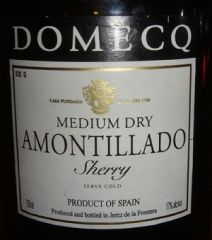
Amontillado:
With age, a "fino" develops an amber color in cask and becomes a "fino-amontillado," then, after at least eight years, a full "amontillado," when it takes on a nutty character and acquires more body. A true "amontillado" is completely dry, with between 16 and 18% alcohol, but will often be sweetened to a medium style for export markets. The term "amontillado" means "Montilla style"; it was originally used to distinguish a sherry with characteristics similar to those of Montilla (then part of the Jerez region). Ironically, it was illegal for producers of Montilla to use the term "amontillado" under the Spanish republic, thus sherry could be made in a Montilla style, but not Montilla. Under the EU, however, the law has changed and once again Montilla houses are shipping Montilla "amontillado." Domecq (Botaina) * Gonzalez Byass (Duque) * Sandeman (Bone Dry Old Amontillado) * Valdespino (Coliseo, Don Tomás) * Wisdom & Warter (Very Rare Solera Muy Viejo) |
|
|
Discuss the Brown Sherry style.
|
Brown Sherry:
This sweetened "oloroso" is usually, but not always, of lesser quality than "oloroso." High-quality Brown Sherries used to be very popular in Scotland. Williams & Humbert (Walnut Brown) |
|
|
Discuss the Cream or Dark Cream style of sherry.
|
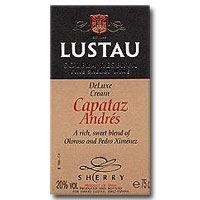
Cream Sherry, or Dark Cream Sherry:
An "oloroso" that is usually sweetened with Pedro Ximénez, the quality of which can range from the commercial to extremely good. Diego Romero (Jerezana) * Lustau (Premium Solera, Vendimia) |
|
|
Discuss the East India style of sherry.
|
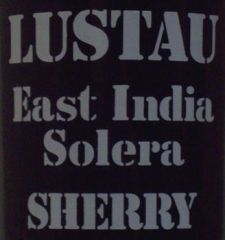
East India Sherry:
Some sources believe that this rich, sweet, Madeira-like style of sherry dates back to as early as 1617, but the practice of shipping sherry to East Asia and back gradually disappeared during the 19th century with the advent of steam-driven engines. It was revived in 1958 by the owners of the Ben Line and Alastair Campbell, an Edinburgh wine merchant, when they sent a hogshead of Valdespino Oloroso on a 20,000-mile (32,000-kilometer) round trip to East Asia, but although the style survives, the effects of the sea voyage, as with Madeira, are now replicated in the cellar. Lustau (Old East India) * Osborne (India Rare Solera Oloroso) |
|
|
Discuss the Fino style of sherry.
|
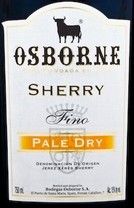
Fino Sherry:
A "palma" is the highest quality of "fino" sherry and may be graded in a rising scale of quality: dos palmas, tres palmas, cuatro palmas. A "palma cortada" is a "fino" that has developed more body, has a very dry, but smooth, almondy flavor, and is veering toward "amontillado." An "entre fino" has little merit. Few "finos" remain "fino" with age in cask, which is why genuine Old Fino Sherry is rare. A "fino" is light, dry, and delicate; its "flor" nose should overpower any acetaldehyde. This style is best appreciated straight from the cask, when it is crisp and vital, as it quickly tires once bottled and further declines rapidly as soon as it is opened. Until producers are required to declare the bottling date on the label (fat chance), the only sensible advice is not to buy "fino" until the day you want to drink it and, once opened, consume the entire contents: don't keep it. The wines are invariably 100% Palomino with an alcoholic strength of between 15.5 and 17%. Tomás Abad * Domecq (La Ina) * Gonzalez Byass (Tio Pepe) * La Riva (Tres Palmas) * Williams & Humbert (Pando) |
|
|
Discuss the Manzanilla style of sherry.
|
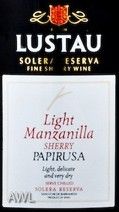
Manzanilla:
Sea winds in the Sanlúcar de Barrameda area create a more even temperature and higher humidity than those found in Jerez itself, which, with the tradition of allowing more ullage (empty volume) in "manzanilla" casks, encourages the thickest, whitest, and most vigorous growth of "flor" in the region. "Fino" is therefore the most classic style, but "manzanilla," too, has its "fino-amontillado" (called "pasada") and "amontillado." "Oloroso" and various intermediary styles are also produced, but these are invariably sold as sherry, rather than "manzanilla," even when they are exclusively composed of the latter. |
|
|
Discuss the Manzanilla Amontillado style of sherry.
|
Manzanilla Amontillado:
Fuller than a "pasada," but lighter and more fragrant than Jerez "amontillado," this is less common than the previous two, but can be excellent. Barbadillo (Principe) * Lustau (Manuel Cuevas Jurado) |
|
|
Discuss the Manzanilla Fina style of sherry.
|
Manzanilla Fina:
Manzanilla (sherry made in Sanlúcar de Barrameda) is a relatively modern, early-picked, "fino." Its production differs from that of a traditional "fino" in that its fortification is lower and the "solera" system more complex. A true "manzanilla fina" is pale, light-bodied, dry, and delicate with a definite "flor" nose, a touch of bitterness on the palate, and sometimes even a slightly saline tang. These wines are usually 100% Palomino with an alcoholic strength of 15.5-17%. Barbadillo (Eva) * Diez-Mérito (Don Zoilo) * Duff Gordon (Cabrera) |
|
|
Discuss the Manzanilla Pasada style of sherry.
|

Manzanilla Pasada:
When a "manzanilla" begins to age, it loses its "flor," gains alcoholic strength, and becomes the equivalent of a "fino-amontillado," known in Sanlúcar de Barrameda as a "pasada." These wines are invariably 100% Palomino with an alcoholic strength of up to 20.5%. Barbadillo (Solear) * Delgado Zuleta (Amontillado Fino, La Goya) * Hidalgo (Pasada) |
|
|
Discuss the Milk style of sherry.
|
Milk Sherry:
Sweetened "amontillado," usually of lesser quality. |
|
|
Discuss the Moscatel style of sherry.
|
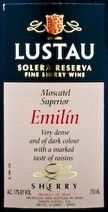
Moscatel Sherry:
Occasionally, releases of this wine can be rich, raisiny delights. Lustau (Las Cruzes, Solera Reserva Emilin) |
|
|
Discuss the Oloroso style of sherry.
|
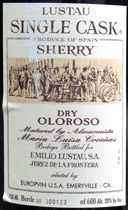
Oloroso Sherry:
"Oloroso" means fragrant and, when genuinely dry, rich, and complex from age, I find it certainly has the greatest finesse, and is the most rewarding wine in Jerez. Much of its character is due to the relatively high fortification it receives and the generous glycerine content that develops without the aid of "flor." The alcoholic strength of these wines usually ranges between 18 and 20%. Some high-quality, sweeter, dessert-style "oloroso" wines are also produced. Dry: Barbadillo (Oloroso Seco) * Diez-Mérito (Victoria Regina) * Domecq (Rio Viejo) * Gonzalez Byass (Alfonso, Apostles) * Hidalgo (Oloroso Seco) * Lustau (Don Nuno, Emperatríz Eugenia, Principe Rio, Tonel) * Osborne (Bailén, Alonso el Sabio) * Diego Romero (Jerezana) * Sandeman (Dry Old Oloroso) * Valdespino (Don Gonzalo) Dessert Style: Gonzalez Byass (Matúsalem) * Sandeman (Royal Corregedor) * Valdespino (Solera 1842) |
|
|
Discuss the Pale Cream style of sherry.
|
Pale Cream Sherry:
Pale cream is sweetened, usually lesser-quality, "fino" sherry. |
|
|
Discuss the Pale Dry style of sherry.
|
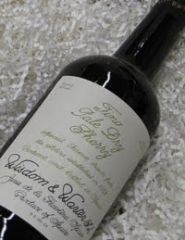
Pale Dry Sherry:
This style is synonymous with "fino." |
|
|
Discuss the Palo Cortado style of sherry.
|
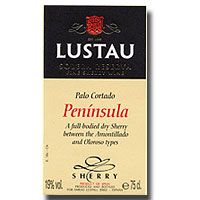
Palo Cortado Sherry:
This wine cannot be deliberately made, nor even encouraged (a "palo cortado solera" is very difficult to operate); only one butt in a thousand turns into a true "palo cortado." A law unto itself, it is a naturally dry wine with a style somewhere between "amontillado" (on the nose) and "oloroso" (on the palate), but this description does not by any means convey the stunning richness, nutty complexity, and fabulous finesse, which really must be experienced to be believed. It should be totally dry, but some sweeter dessert-style "palo cortado" wines are produced and can be wonderful. Like "palma," "palo cortado" may be graded: dos cortados, tres cortados, cuatro cortados. Domecq (Sibarita) * Hidalgo (Jerez) * Lustau (Peninsula) * Rosario Fantante (Dos Cortados) * Sandeman (Dry Old) * Valdespino (Cardenal) * Williams & Humbert (Dos Cortados) Dessert Style: Osborne (Abocado Solera) * Sandeman (Royal Ambrosante) * Wisdom & Warter (Tizón) |
|
|
Discuss the Pedro Ximénez style of sherry.
|
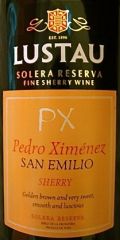
Pedro Ximénez Sherry:
Although it is primarily produced as a sweetening agent, Pedro Ximénez is occasionally released in limited bottlings that are invariably very old and utterly stunning. These are huge, dark, deep, powerfully rich wines piled high with complex yet succulent, raisiny, Muscovado flavors. These bottlings of Pedro Ximénez can be compared in quality, weight, and intensity - though not in character - with only some of the oldest and rarest Australian liqueur Muscats. Gonzalez Byass (Noe) * Lustau (Murillo, San Emilio) * Sanchez Romate (Superior) * Valdespino (Solera Superior) * Wisdom & Warter (Viale Viejisimo) |
|
|
Discuss the Puerto Fino style of sherry.
|
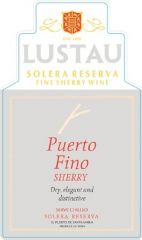
Puerto Fino Sherry:
This is a "manzanilla"-type sherry that is produced in El Puerto de Santa Maria, where the winds are almost as legendary as those of Sanlúcar de Barrameda. Burdon (Puerto Fino Superior Dry) * Osborne (Coquinera Amontillado) |

